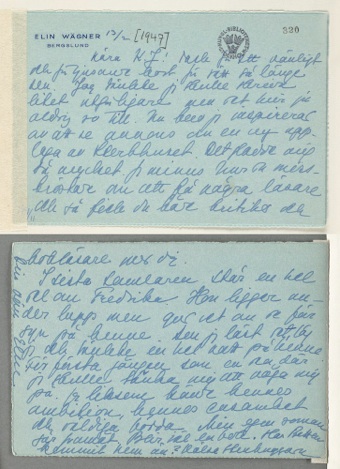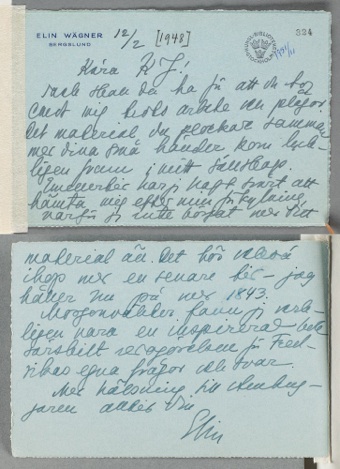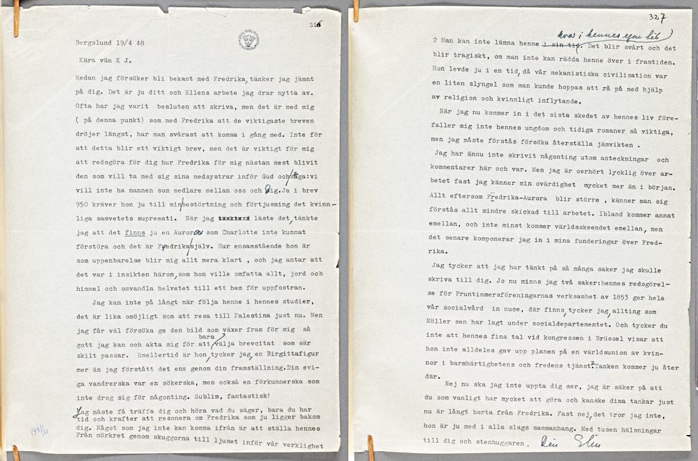Åsa Elzén
Forest Calling – A Never-ending Contaminated Collaboration
or Dancing is a Form of Forest Knowledge /
Skogen kallar – Ett oändligt kontaminerat samarbete eller
Dansandet är en form av skogskunskap
– Extension #2 at The Experimental Field, Accelerator, SU
– Extension #1 In Forest Intervals
Notes on a Fallow – The Fogelstad Group and Earth /
Träda – Fogelstadgruppen och jord
– A Growing Fallow Archive / Ett växande träda-arkiv
– Biography of a Fallow / En trädas biografi
– Transcript of a Fallow / Avskrift av en Träda
– Fogelstad Fågelstad Fågelsta Fågelholk Fågelbo
– The Other School / Den andra skolan
– A Growing Archive on the Women’s Barn and Livestock
School at Fogelstad / Ett växande arkiv över Kvinnliga
Ladugårdsutbildningen vid Fogelstad
– A Step to the Side / Ett steg åt sidan
– A Growing Peace with the Earth Collection
– Transcript of Transcripts: Elin – Bang /
Avskrifter av avskrifter: Elin – Bang
– Why do things when you could leave it? – An attempt,
an in-between land / Varför gör man saker då man kunde
låta bli? – Ett försök, ett gränsland
While I am trying to get to know Fredrika, I am always
thinking of you.
– Memory of an Event I (Dear Honorine / Dearest Signe)
Mary Wollstonecraft’s Scandinavian journey 1795 re-traced
YES! Association/Föreningen JA!
– A New Spelling of a Street – A tribute to Audre Lorde
– All that you touch You Change. All that you Change
– (art)work(sport)work(sex)work
– Zyklische Gesellschaftsreise
– We Will Open a New Front/Lee H. Jones
While I am trying to get to know Fredrika, I am always
thinking of you.
Medan jag försöker bli bekant med Fredrika, tänker jag jämt på dig.
site-specific installation / on-going action, copies of letters written by Elin Wägner 1947-48, paper, pens, typewriter, tables and chairs, 2018
At Bie biennal 2016 Åsa Elzén participated with the project Memory of an Event that created a link between The Women Citizen’s School at Fogelstad (Kvinnliga Medborgarskolan vid Fogelstad) (1925–1954) and Bie Bath (Augustenbad/Bie Badanstalt) (1843–1940). The project dealt with two fictitious events around 1920, a strike and a love story that were discussed in two letters, one signed Signe and the other Honorine, written by Elzén.
Åsa Elzén’s engagement in the legacy and history writing concerning The Women Citizen’s School at Fogelstad is since ongoing and in focus also at the current Bie biennal/text through the project While I am trying to get to know Fredrika, I am always thinking of you (Medan jag försöker bli bekant med Fredrika, tänker jag jämt på dig.). (Quote from a letter written by Elin Wägner to Klara Johanson 19/4 1948.)
...
above and below (from top down):
installation views with visitors/participants at Bie biennal
letters from Elin Wägner to Klara Johanson 3/2 1947 and 12/2 1948
letters from Elin Wägner to Klara Johanson 19/4 1948
installation views with visitors/participants at Bie biennal
During the years 1947–48, Elin Wägner (born 1882, writer and part of the Fogelstad-group) wrote a number of letters where fragments or longer paragraphs about her ongoing Fredrika Bremer-biography appear. Fredrika Bremer (1801–1865) was a writer and a well known feminist pioneer. The biography was never completed since Wägner passed away in January 1949. The letters are written to friends and colleagues, among them to literary critic and essayist Klara Johanson who previously had published Fredrika Bremer’s collected letter correspondence.
Visitors to the exhibition are invited to try to decipher and re-enact / transcribe some of these handwritten (and one typed) letters as a way to approach Wägner ”this side” of the words. Through the letters we understand that Wägner is trying to approach Bremer by reading her posthumous letters and through reading and re-activating Wägner’s letters we approach Wägner, Bremer and the receiver of the letter. We interact with triangular relationships and through our involvement we create an expanded web of relations. Depending on the intensity of this involvement we write ourselves into, or encounter a feminist genealogy where the singular subject dissolves and we are faced with the ethical dilemmas of biography-making as well as its boundaries and contingencies.





